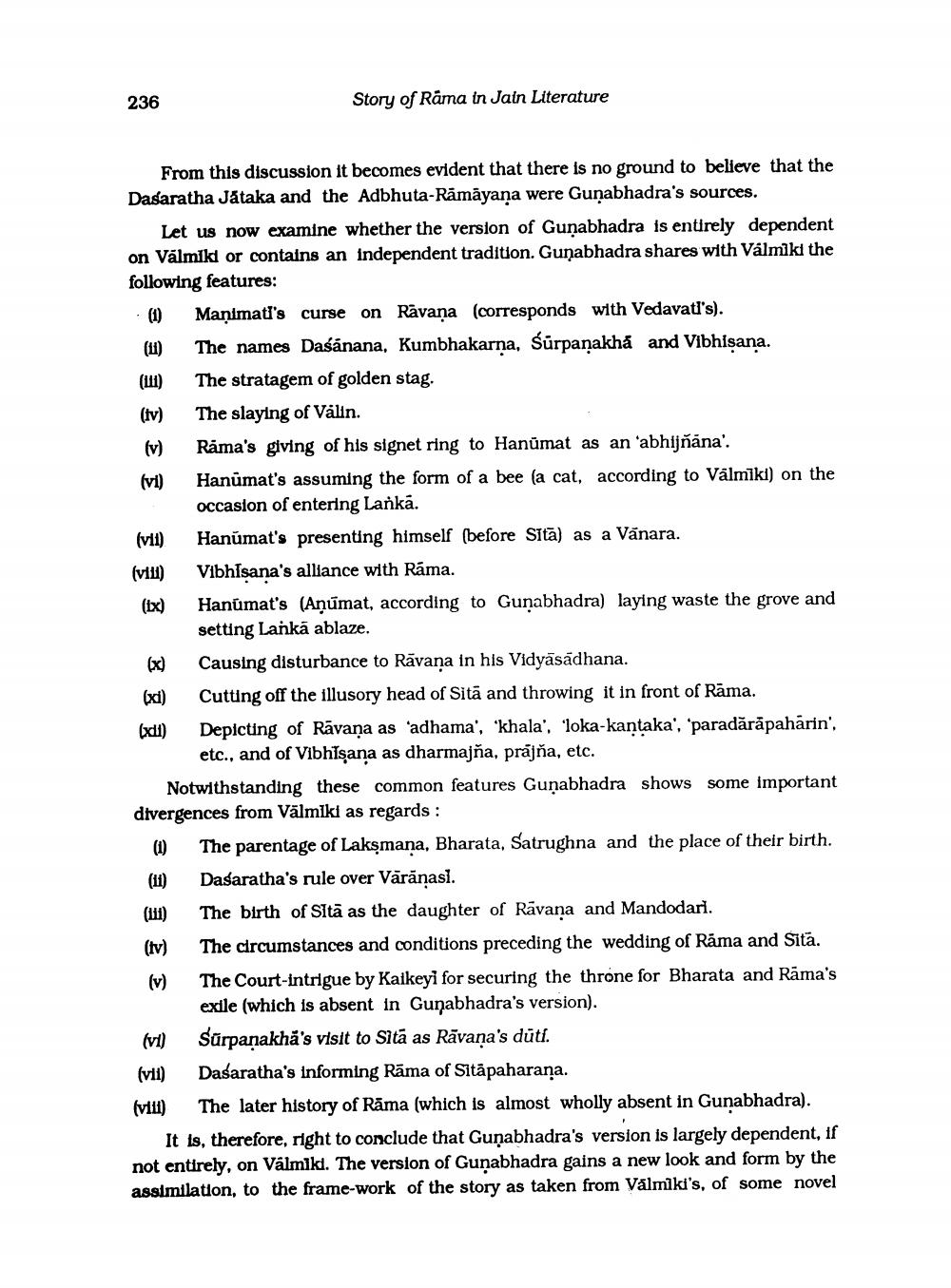________________
236
From this discussion it becomes evident that there is no ground to believe that the Dasaratha Jātaka and the Adbhuta-Rāmāyaṇa were Gunabhadra's sources.
Let us now examine whether the version of Gunabhadra is entirely dependent on Valmiki or contains an independent tradition. Gunabhadra shares with Valmiki the following features:
(1)
Manimati's curse on Ravana (corresponds with Vedavati's).
The names Dasánana, Kumbhakarna, Surpanakha and Vibhiṇana.
The stratagem of golden stag.
The slaying of Válin.
Rama's giving of his signet ring to Hanûmat as an 'abhijñána.
Hanumat's assuming the form of a bee (a cat, according to Valmiki) on the occasion of entering Lanka.
(11)
(11)
(Iv)
(v)
(vi)
(vii)
(viii)
(tx)
(x)
(xx)
(xii)
00
(11)
Notwithstanding these common features Gunabhadra shows some important divergences from Välmiki as regards:
(111)
Story of Rama in Jain Literature
(tv)
(v)
(vi)
The birth of Sitä as the daughter of Ravana and Mandodari.
The circumstances and conditions preceding the wedding of Rama and Sita.
The Court-intrigue by Kalkeyi for securing the throne for Bharata and Rama's exile (which is absent in Gunabhadra's version).
Sürpanakha's visit to Sita as Ravana's duti.
Dasaratha's Informing Rāma of Sitäpaharana.
The later history of Rama (which is almost wholly absent in Gunabhadra).
It is, therefore, right to conclude that Gunabhadra's version is largely dependent, if not entirely, on Valmiki. The version of Gunabhadra gains a new look and form by the assimilation, to the frame-work of the story as taken from Välmiki's, of some novel
(vii)
Hanumat's presenting himself (before Sita) as a Vanara.
Vibhlsana's alliance with Ráma.
(viii)
Hanumat's (Anumat, according to Gunabhadra) laying waste the grove and setting Lahkä ablaze.
Causing disturbance to Ravana in his Vidyäsädhana.
Cutting off the illusory head of Sita and throwing it in front of Rama.
Depicting of Ravana as 'adhama', 'khala', 'loka-kantaka', 'paradārāpaharin', etc., and of Vibhişana as dharmajňa, prájňa, etc.
The parentage of Lakṣmana, Bharata, Satrughna and the place of their birth. Dasaratha's rule over Vārānasi.




